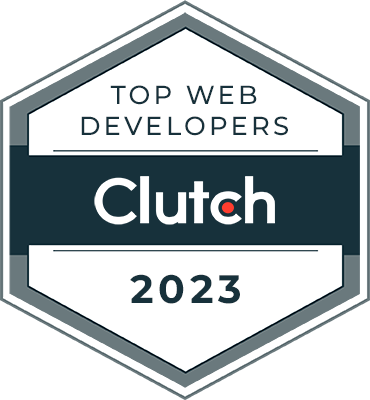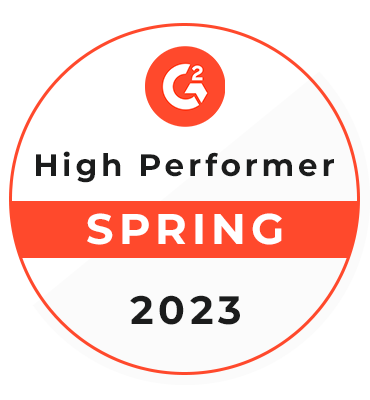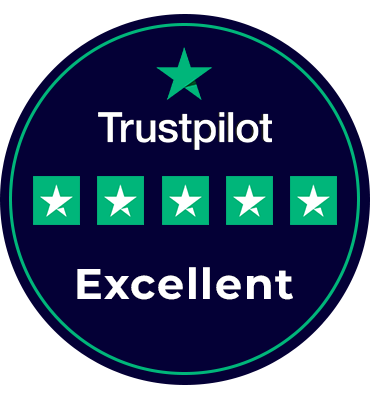How AI Reduces the Cost of PoC Software Development | Optimize PoC Costs with AI
Shyam Singh
Last Updated on: 16 October 2025
Proof of Concept (PoC) software development is a crucial phase for businesses looking to test new ideas, technologies, or applications before committing to full-scale development. However, PoC projects often involve high costs, uncertain outcomes, and resource-intensive efforts. Businesses constantly seek ways to minimize expenditure without compromising the quality of experimentation. One of the most promising solutions in recent years has been the integration of Artificial Intelligence (AI) into PoC software development.
AI offers a variety of tools and strategies to streamline processes, reduce errors, and optimize costs—both direct and secondary. In this blog, we’ll explore how AI can help reduce the cost of PoC software development, with a focus on secondary costs and practical implementation strategies.
What is PoC Software Development?
Before diving into cost reduction strategies, it’s important to define what PoC software development entails. A Proof of Concept (PoC) is a small-scale prototype or pilot project designed to validate the feasibility, technical functionality, and business value of a proposed software solution. PoCs are typically used to:
- Demonstrate technical viability of a new idea.
- Test integration with existing systems.
- Assess user experience and usability.
- Identify potential challenges and risks before full-scale development.
While PoCs are smaller than full applications, they still involve significant costs, which can be broken down into:
- Direct Costs: Development hours, design, testing, and infrastructure.
- Secondary Costs: Delays, resource inefficiencies, repeated iterations due to errors, and stakeholder management overhead.
AI has emerged as a transformative tool that reduces both these cost categories.
How AI Reduces Direct Costs in PoC Software Development
Direct costs are the most visible expenses in PoC projects, including software engineering, UI/UX design, testing, and cloud infrastructure. AI contributes to cost reduction in several ways:
1. AI-Powered Code Generation
AI tools like GitHub Copilot, OpenAI Codex, and other generative AI systems can assist developers by suggesting code snippets, automating repetitive coding tasks, and even generating entire modules based on prompts.
- Reduces development hours.
- Minimizes coding errors.
- Accelerates PoC delivery.
Example: A PoC that typically takes 400 hours to develop manually can see a 20–30% reduction in developer time with AI assistance.
2. Automated Testing and Quality Assurance
Testing is a major cost in PoC development, especially when multiple iterations are required. AI-powered testing tools can automatically generate test cases, detect bugs, and predict potential system failures.
- Speeds up the QA process.
- Reduces human error.
- Allows for continuous testing without additional manpower.
Example: Tools like Testim or Applitools use AI to identify UI inconsistencies and functional errors, drastically reducing the time spent on repetitive testing cycles.
3. Intelligent Project Management
AI-driven project management tools can optimize resource allocation, track progress, and predict potential delays based on historical data.
- Reduces project overruns.
- Avoids unnecessary overtime.
- Improves planning accuracy.
Example: AI platforms like ClickUp AI and Monday.com’s AI assistant can predict task completion times and alert managers about bottlenecks, allowing early intervention to prevent extra costs.
Reducing Secondary Costs with AI
While direct costs are easier to measure, secondary costs—such as miscommunication, repeated rework, delayed decision-making, and operational inefficiencies—often make PoCs significantly more expensive. AI addresses these hidden costs in the following ways:
1. Predictive Analytics for Risk Management
- Prevents costly rework due to late-stage failures.
- Reduces delays that may affect stakeholders or funding.
- Optimizes resource utilization.
Example: An AI system analyzing previous PoCs can predict that a particular module is likely to fail integration tests, prompting early intervention and saving weeks of rework.
2. Optimized Resource Allocation
- Reduces idle time for high-value staff.
- Minimizes project delays due to bottlenecks.
- Prevents overstaffing and underutilization.
Example: AI-based workforce management tools ensure developers focus on core PoC modules while AI handles repetitive scripts, testing, or deployment tasks.
3. Enhanced Collaboration and Knowledge Management
- Reduces miscommunication.
- Speeds up decision-making.
- Lowers dependency on frequent meetings.
Example: AI chatbots can answer developers’ questions about code repositories or previous iterations instantly, eliminating delays caused by waiting for senior approvals.
4. Smart Cloud Cost Optimization
- Avoids overspending on idle servers.
- Predicts future usage to prevent unplanned expenses.
- Automates scaling based on actual demand.
Example: AI cloud management tools like CloudHealth or AWS Cost Anomaly Detection help PoC teams reduce cloud spend by up to 25–30% through intelligent scaling and alerts.
AI Use Cases That Reduce PoC Costs
1. Low-Code/No-Code Platforms
AI-powered low-code or no-code platforms allow PoC development with minimal coding. These platforms often use AI to suggest workflows, design UI automatically, and even generate APIs.
- Reduces developer hours.
- Accelerates time-to-market.
- Lowers dependency on highly skilled developers.
2. Automated Data Analytics
For PoCs that involve data-intensive applications, AI can automatically clean, preprocess, and analyze data. This eliminates manual efforts in preparing datasets, which is often time-consuming and expensive.
- Reduces time spent on data wrangling.
- Minimizes errors in data preparation.
- Allows faster iteration of AI-powered PoCs.
3. AI-Driven Simulation and Modeling
Before actual coding, AI can simulate user behavior, system load, and integration scenarios. This predictive modeling identifies potential failures or inefficiencies before they become costly.
- Reduces repeated iterations.
- Prevents expensive trial-and-error cycles.
- Enhances accuracy of feasibility testing.
Steps to Implement AI in PoC Software Development
- Identify High-Cost Areas: Focus on stages with the highest direct or secondary costs, such as testing, integration, or cloud usage.
- Select AI Tools Strategically: Use AI tools that fit your PoC needs—code generation, testing automation, predictive analytics, or resource management.
- Train AI Models with Relevant Data: Ensure AI models are trained with historical PoC data or project-specific datasets for accurate predictions.
- Integrate AI Seamlessly: AI should complement, not replace, human developers. Maintain a balance between AI automation and expert oversight.
- Monitor and Measure Impact: Track cost savings, time reductions, and efficiency improvements to validate ROI from AI implementation.
Benefits Beyond Cost Savings
While reducing costs is often the primary motivation for integrating AI into PoC software development, the advantages go far beyond mere financial savings. AI empowers teams to innovate faster, improve quality, and make more informed decisions—benefits that can have a lasting impact on the success of both the PoC and subsequent full-scale software development.
1. Faster Time-to-Market
AI accelerates the entire prototyping process by automating repetitive tasks such as code generation, testing, and data preprocessing. This means that PoCs can be developed, tested, and iterated much more quickly than with traditional methods.
For example, AI tools like GitHub Copilot can suggest entire code snippets or modules based on minimal prompts, reducing hours of manual coding. Similarly, AI-driven automated testing platforms can identify bugs and errors immediately after code deployment, eliminating the need for lengthy manual QA cycles.
Impact: Businesses can validate ideas and bring new features or applications to market faster, gaining a competitive edge in rapidly evolving industries. Faster time-to-market also allows for quicker feedback from users, enabling more responsive and informed product development.
2. Improved Accuracy and Quality
AI enhances the precision of PoC development by minimizing human errors and predicting potential issues before they occur. Predictive analytics can flag weak points in the system architecture, while AI-powered testing identifies inconsistencies, security vulnerabilities, and performance bottlenecks.
For instance, AI-based testing platforms like Testim and Applitools use machine learning to detect even subtle UI inconsistencies or functional errors that might be overlooked by human testers. Additionally, AI can simulate various real-world scenarios to ensure the PoC behaves reliably under diverse conditions.
Impact: The resulting PoC is more robust and reliable, reducing the likelihood of costly revisions in later development stages. This improved quality also builds stakeholder confidence, demonstrating that the proposed solution is technically sound and feasible.
3. Scalability and Future Readiness
One of the key challenges with PoCs is ensuring that the prototype can be effectively scaled into a full-fledged product. AI insights help teams design PoCs with scalability in mind. By analyzing usage patterns, predicting system loads, and optimizing resource allocation, AI ensures that PoCs are built on a foundation that can handle growth and increased complexity.
For example, AI-powered cloud management tools can automatically scale infrastructure based on predicted demand, preventing performance bottlenecks as the application grows. Similarly, AI can suggest architectural improvements to make the PoC modular and easily extensible.
Impact: Organizations can transition from PoC to production faster, with fewer structural changes required. This reduces the risk of delays and additional costs when scaling, ensuring the software remains efficient and reliable as user demand increases.
4. Better Decision-Making
AI transforms PoC development from a reactive process into a proactive and data-driven one. Predictive analytics, trend analysis, and AI-generated insights provide decision-makers with a clear understanding of potential risks, opportunities, and outcomes.
For instance, AI can forecast which features are most likely to succeed based on user behavior simulations or historical project data. It can also recommend the optimal allocation of resources and identify areas where additional investment will yield the highest returns.
Impact: By relying on AI-driven insights, teams can make more confident strategic decisions, prioritize efforts effectively, and reduce uncertainty. This ensures that both technical and business choices during the PoC phase are well-informed, increasing the likelihood of overall project success.
Conclusion
AI is no longer just a futuristic concept; it is a practical tool that can significantly reduce both direct and secondary costs in PoC software development. By leveraging AI for code generation, automated testing, predictive analytics, resource allocation, and cloud optimization, businesses can create PoCs faster, cheaper, and with higher quality.
The impact of AI is most profound when it addresses hidden secondary costs—inefficiencies, delays, repeated rework, and miscommunication. Companies that adopt AI-driven PoC strategies not only save money but also gain a competitive edge by accelerating innovation and reducing time-to-market.
For organizations looking to experiment with new ideas without incurring prohibitive costs, AI is no longer optional—it’s essential.
Frequently Asked Questions (FAQs)
1. What is a PoC (Proof of Concept) in software development?
A Proof of Concept (PoC) is a small-scale prototype or pilot project created to validate the technical feasibility, usability, and business value of an idea before investing in full-scale development.
2. How can AI reduce the cost of PoC development?
AI reduces PoC costs by automating repetitive tasks (code generation, testing, data prep), improving accuracy with predictive analytics, optimizing cloud and resource usage, and accelerating iteration cycles to lower both direct and secondary expenses.
3. Which AI tools are commonly used for PoC development?
Common AI tools include code assistants (e.g., GitHub Copilot), automated testing platforms (e.g., Testim, Applitools), data-cleaning and analytics tools, low-code/no-code AI platforms, and cloud cost-optimization services like AWS Cost Anomaly Detection.
4. What are secondary costs and how does AI address them?
Secondary costs are hidden expenses such as delays, rework, miscommunication, and idle resources. AI addresses these through predictive risk detection, intelligent task allocation, automated documentation/chatbots, and real-time cloud optimization.
5. Is AI suitable for every PoC project?
Not always. AI is most beneficial for PoCs that involve repetitive development tasks, data processing, testing, or cloud resources. For highly experimental concepts with no historical data or where human judgment is essential, AI benefits may be limited.
6. How much development time can AI realistically save?
Time savings vary, but AI-assisted coding and automation typically reduce developer time by 15–40% depending on the task, the maturity of AI tools used, and team familiarity with AI workflows.
7. Will using AI compromise code quality or security?
AI can both improve and introduce risks. It improves quality by catching common errors and suggesting best practices, but outputs must be reviewed to avoid insecure patterns or incorrect logic. Always combine AI outputs with manual review and security scanning.
8. How does AI help optimize cloud costs for PoCs?
AI-driven cloud tools monitor usage, detect idle resources, predict demand, and automate scaling. They can recommend right-sizing instances, schedule shutdowns for non-production environments, and alert on cost anomalies to reduce waste.
9. What data is needed to get value from AI in PoC projects?
Useful data includes historical project metrics (time, defects), usage logs, performance telemetry, sample datasets for modeling, and architecture documentation. The more relevant historical data you provide, the better AI can predict and optimize outcomes.
10. Can low-code/no-code platforms fully replace developers for PoCs?
Low-code/no-code platforms can accelerate many PoCs—especially for UI workflows and integrations—but complex business logic, performance-critical tasks, and custom integrations still require skilled developers. These platforms are best used to supplement development.
11. How do we measure ROI after using AI in a PoC?
Measure ROI by comparing development hours saved, reduction in defect/iteration counts, cloud cost savings, time-to-market improvements, and business outcomes such as stakeholder buy-in or pilot conversion rates to production.
12. What are best practices for integrating AI into PoC workflows?
Best practices include identifying high-impact tasks to automate, starting small with pilot AI tools, maintaining human oversight for reviews, tracking metrics to measure impact, ensuring data privacy/compliance, and iterating on AI models with project-specific data.
13. Does using AI in PoC development introduce compliance or privacy concerns?
Potentially. Ensure AI tools and datasets comply with relevant regulations (e.g., GDPR), avoid exposing sensitive data to third-party services without protections, and implement data anonymization, access controls, and audit logging where required.
14. How quickly can a team adopt AI for PoC work?
Adoption speed depends on team readiness and tooling. Simple gains (code suggestions, automated tests) can be realized within days or weeks. More advanced implementations (predictive analytics, custom models) may take several weeks to months to integrate and validate.
15. What are common pitfalls when using AI for PoCs?
Common pitfalls include over-reliance on AI without review, inadequate training data, underestimating integration effort, ignoring security/privacy implications, and not measuring impact—leading to wasted effort or unexpected costs.

 Verified
Expert in Software & Web App Engineering
Verified
Expert in Software & Web App Engineering
I am Shyam Singh, Founder of Fulminous Software Private Limited, headquartered in London, UK. We are a leading software design and development company with a global presence in the USA, Australia, the UK, and Europe. At Fulminous, we specialize in creating custom web applications, e-commerce platforms, and ERP systems tailored to diverse industries. My mission is to empower businesses by delivering innovative solutions and sharing insights that help them grow in the digital era.
Partner with Top-Notch Web Application Development Company!
Discuss your Custom Application Requirements on info@fulminoussoftware.com or call us on +1-903 488 7170.
15 Days Risk-Free TrialRecommended Articles


